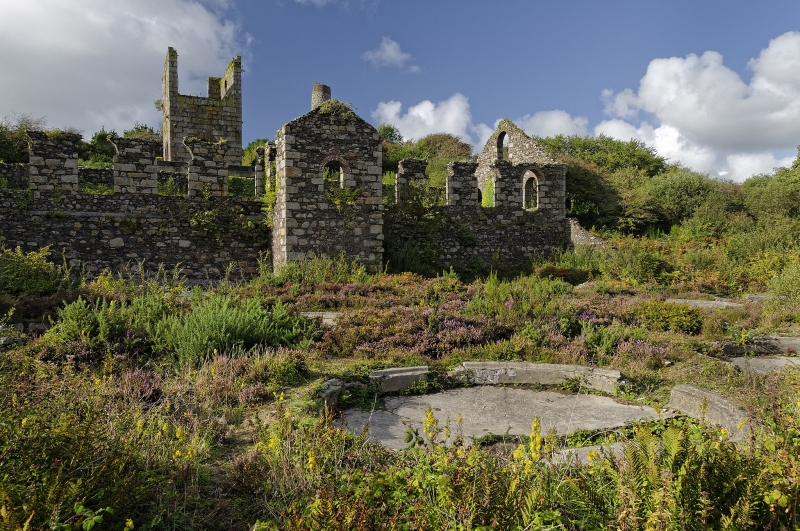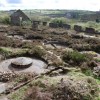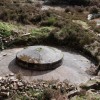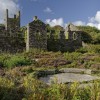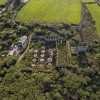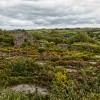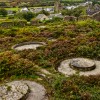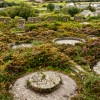Uploader's Comments
On the lower slopes of Carn Brea just north of the village is the tall engine house and separate stack of a 40 inch stamps engine built by Tuckingmill Foundry, Camborne in 1875 to alleviate the mine's previously inadequate stamping capacity. The stamps engine house stands above one of the finest surviving 19th century dressing floors in Cornwall where the ore was concentrated.
In the foreground are the remains of the concave and convex concrete depressions that mark the sites of former "buddles". These were used for gravitationally separating the heavy tin ore from the lighter waste.
Directly behind the arched wall is the Vanner house. This contained shaking tables known as 'Frue Vanners' that were used to separate heavier black tin particles from lighter waste in the crushed ore. The projecting part of the building (centre) contained a small steam engine which drove the vanners. From there the pulp (as the pulverised ore and water mixture was termed) was wheeled to the buddles in the foreground. In general tin ore averaged only 1 to 1.5 % of the rock which had to be processed at this time.
Uploaded by malcolm osman on 14 October 2018
